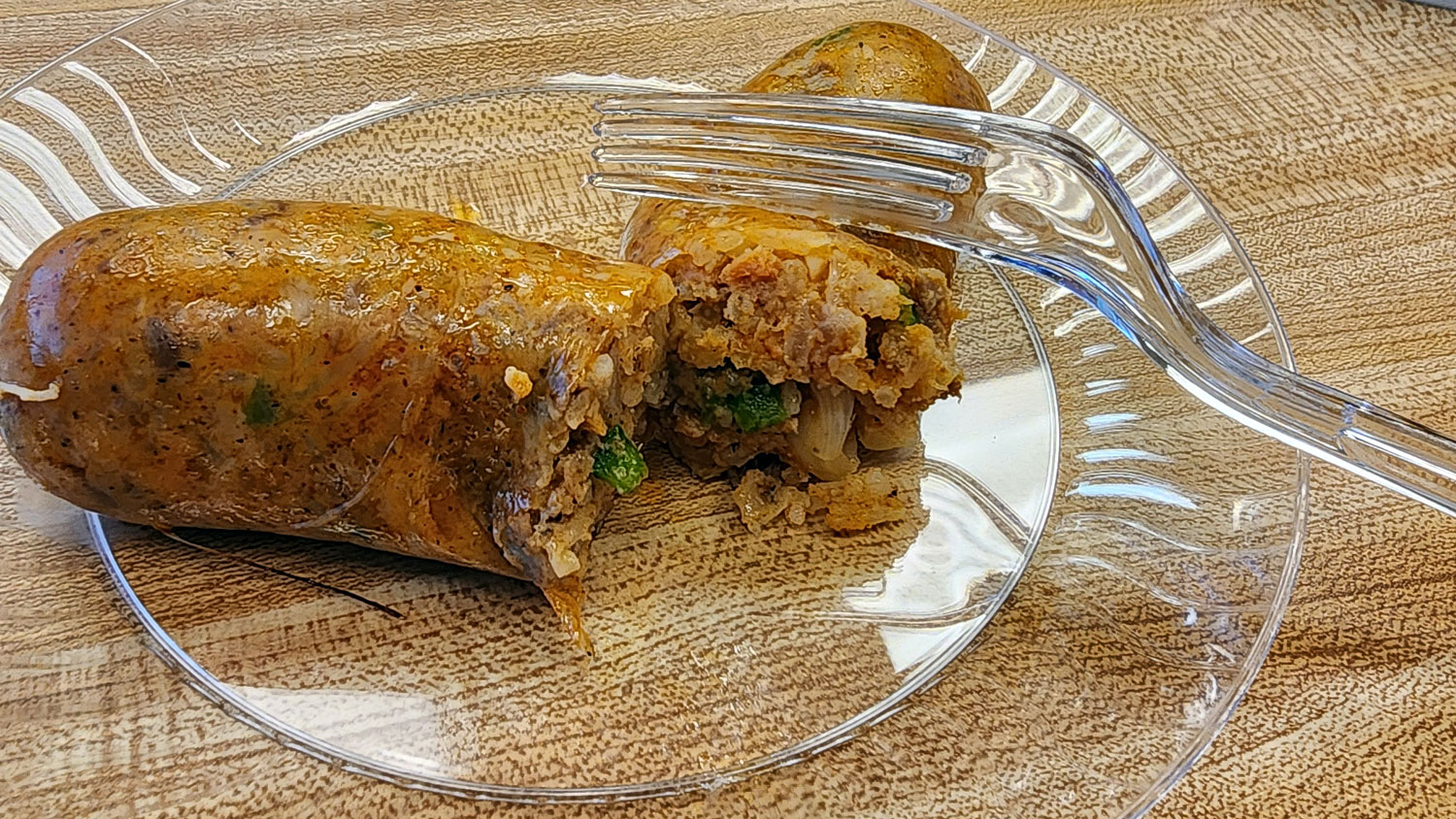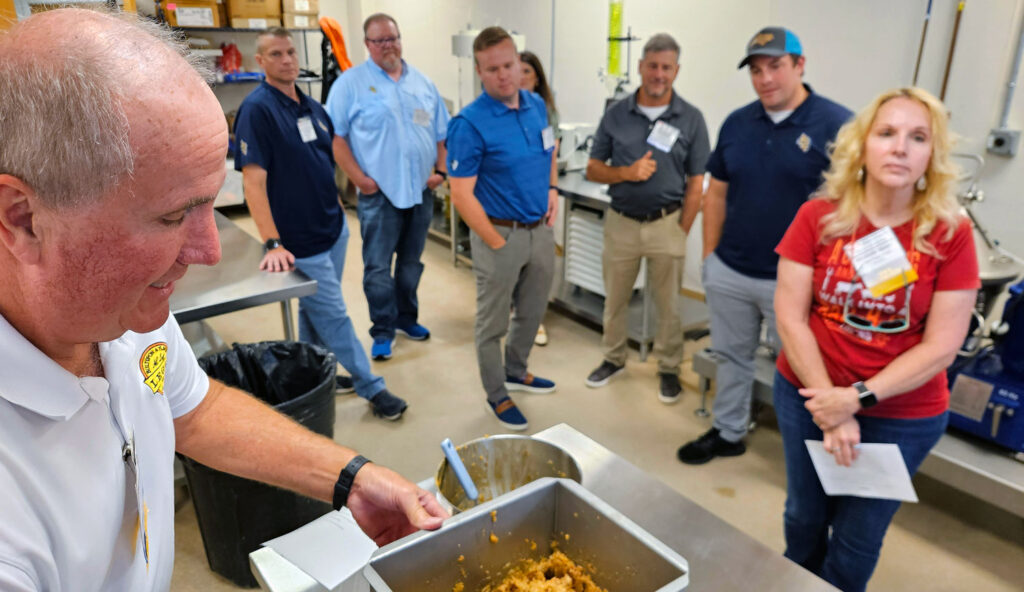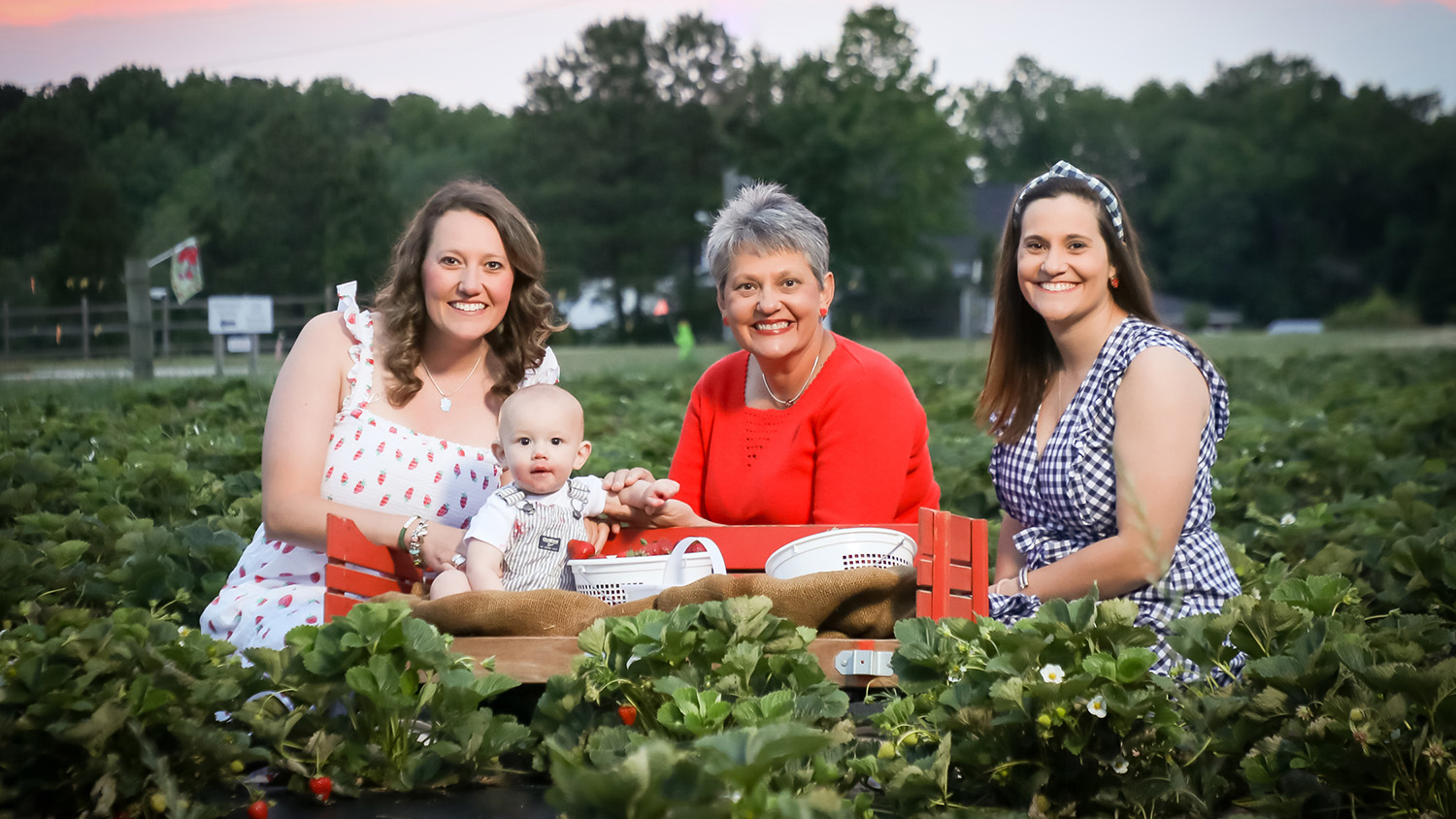Fishing for a New Sausage Recipe

One of Louisiana’s signature foods, boudin sausage, is getting a fresh twist in North Carolina, thanks to a partnership between NC State University and North America’s largest producer of smoked salmon.
Boudin, pronounced BOO’ dan, is traditionally made with pork trimmings, along with cooked rice, vegetables, such as celery and onions, and plenty of spices.
Boudin makers sometimes opt for seafood instead of pork. In Louisiana, that’s typically crawfish. But NC State food scientists are experimenting with smoked salmon. Researchers in the Department of Food, Bioprocessing and Nutrition Sciences are working with Acme Smoked Fish, which has processing facilities in Florida, Massachusetts, New York, and Wilmington, North Carolina.
“After the salmon is cold-smoked, they make different cuts to the salmon filet, depending on the customer,” explains NC State Seafood Lab Director Alex Chouljenko, who is based at the Center for Marine Sciences and Technology (CMAST) in Morehead City, North Carolina. “Some customers may be OK with leaving more of the gray meat and peripheral fat on the fish, so it’s not trimmed very much. Others may want it to be very trimmed to sell at perhaps a higher price.”
After the cuts are made, up to 60,000 pounds of smoked salmon trimmings and salmon skins remain each year. Some of these byproducts end up in a landfill, though some are sold abroad or to feed or fertilizer companies.
With funding from the National Oceanic and Atmospheric Administration (NOAA), researchers from the NC State Aquaculture Team found a way to use the trimmings and skins in feed pellets for domesticated striped bass being raised at the NC State Marine Aquaculture Research Center (MARC). Small-scale testing showed that fish meal and fish oil produced from the byproducts could effectively replace up to half of the traditional sources used in diets for striped bass, Chouljenko says.
“We found that up to 50% replacement of the industry standard was viable with no significant differences in fish based on all kinds of markers — health markers, growth markers.”
Tank to Table
Given salmon’s nutritional benefits for humans, Chouljenko wanted to find a way to use the salmon trimmings at the dinner table, too. As a cold water fish, salmon is rich in polyunsaturated fats. Omega-3 fatty acids in fish help cells function, particularly those in the eyes and brain. They also support heart health and the endocrine system.
“Smoked salmon has a lot of good nutrients, but it’s hard to make a food product with it because it’s so oily,” Chouljenko says. “You can’t just dry it because the oil will impede that process.”
Chouljenko and Seafood Research Specialist Greg Bolton decided to try using smoked salmon trimmings in boudin.
“The unique thing about this type of sausage is that it uses rice as one of the other main ingredients,” Chouljenko says. “When we’re substituting the pork with the smoked salmon trimmings, the rice really helps to soak up the oil. And I also feel like it balances out the taste of it. It’s not as fishy, it’s not as salty and it has more of a mild taste.”

A Recipe for Success
Last spring, NC State undergraduate Bruno Pittella helped in the early stages of the research. Pittella tried out a number of recipes to find the best combination of ingredients. The team also got to tour the Acme facility in Wilmington.
This fall, graduate student Zoë Carmac, who’s pursuing a master’s in food science, will continue the research. Carmac, who earned a bachelor’s in nutrition at NC State, will experiment with new ingredients to hold the boudin together.
“Right now for the binding agents, we’re using eggs and breadcrumbs, which fall into the nine major allergens, and so we’re looking to make a more allergen-friendly recipe,” Carmac explains. “I’ve identified a few different ones that I think could still work functionally and price- wise, but would be a little bit more allergen friendly. We’re looking at carrot fiber, cornstarch and flax meal at the moment.”
Carmac’s plans also call for measuring water-holding capacity, oil-binding capacity and cook loss, as well as analyzing the color and texture of the sausage. She hopes to ultimately test the product with sensory panels for trained tasters’ input.
Acme has expressed interest in taking a variation of the smoked salmon boudin to market, which is promising, Chouljenko says.
“Our goal with really any project is to have it be applicable for our stakeholders, whether it’s a product, a process or it’s food safety related,” he says. “We just want any research that we do here to be useful for people, whether industry or consumers. We want to live up to NC State’s rich history of Extension and to serve the people of North Carolina and beyond.”
- Categories:


